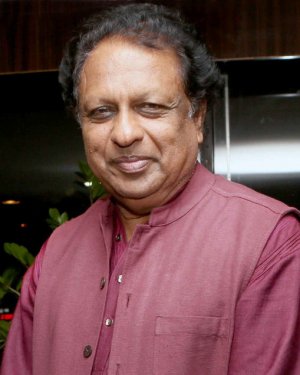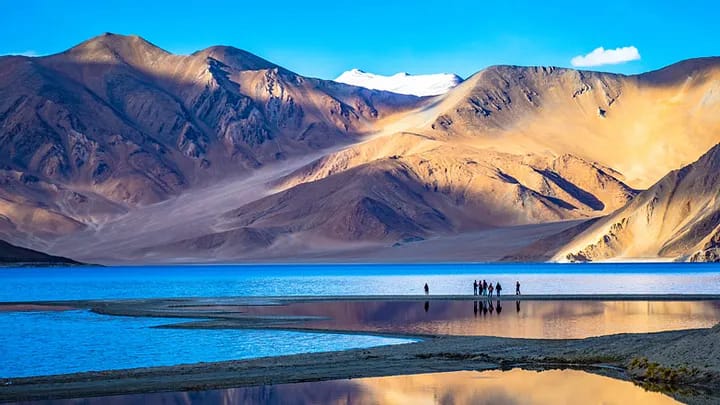
Chances of Disengagement recede in Ladakh .

China claims that Indian soldiers fired warning shots at bank of Pangong Lake,
As the Minister of External Affairs S.Jaishankar leaves for Teheran en route to Moscow to attend a meeting of the Shanghai Cooperation Organisation (SCO), the situation on the China border has deteriorated, indicating that his meeting with the Chinese Foreign Minister is not likely to lead to disengagement .
The two sides have accused each other of aggravating the situation by using gunfire and violating the agreements reached earlier. China appears to be digging in to alter the Line of Actual Control ( LAC) unilaterally. Moreover, China had initially refused to account for three Indians missing from Arunachal Pradesh and questioned India’s locus standi in the matter. Subsequently, China has located them and promised to return them.
The occupation by India of three hill tops on the south bank of Pangong Lake with a panoramic view of the Chinese forces amassed down belowand the deployment of a unit of India’s Special Frontier Force (SFF) for the first time on the LAC have virtually turned the tables on China. India had waited long for the Chinese forces to disengage as agreed long ago. Together with reports that India has sent warships to the South China Sea, opening another front in the ocean, shows that India has taken a calculated risk and strengthened its negotiating position in the forthcoming high level meetings. The India-China chess game has assumed a new dynamism with unpredictable consequences.
India’s deployment of about 10,000 troops comes in the wake of an attempted Chinese incursion along the border in Ladakh over the weekend. The deployment along 70 kilometres gives India a commanding view of the Chinese camp at Moldo. A Chinese spokesperson accused Indian soldiers of trespassing across the de facto border and conducting what it called “flagrant provocations”. Diplomacy has become more urgent after the Chiefs of the Indian Army and Air Force visited the region and made it known that the armed forces have instructions to deal with any Chinese provocation.
Several China experts in India have been urging the Government to take some action to strengthen India’s bargaining position in the face of China refusing to disengage from the areas, newly occupied by them, as agreed between the two sides at the level of Foreign Ministers. Although the talks continued at the military and diplomatic level, the signals emanating from China indicated that no further disengagement was necessary or expected. This placed India in an extremely difficult situation and it became necessary for India to take action to gain a stronger negotiating position, bearing in mind that it may lead to further escalation on the LAC. The Chinese have, as expected, reacted strongly reminding India about the 1962 war. But it is significant that it was the Chinese Defence Minister who asked to meet the Indian Defence Minister in Moscow where both of them were present for the Shanghai Cooperation Organisation (SCO).
The primacy is still for negotiations and a round between the two Defence Ministers has already taken place on Sept 4 in Moscow, though there was no white smoke emanating after two hours of discussions. Both sides are bound to have stated their determination to maintain peace, but on their own terms.The Chinese moves since this April have been more decisive than before, as though they found that Covid-19 had given them a new opportunity to subdue India in its quest to dominate the world. After intense negotiations for several weeks, India has made it clear that it will not remain passive if efforts are made to alter the status quo on the LAC.
The Moscow meeting was an opportunity for both the Defense Minsters to size up each other. There was no official word on the outcome of the meeting. Earlier in the day, addressing the SCO meeting, Rajnath Singh said that a peaceful, stable and secure region, “demands a climate of trust and cooperation, non-aggression, respect for international rules and norms, sensitivity to each other’s interest and peaceful resolution of differences.” India stuck to its bottom line that China should restore status quo as it existed in April by withdrawing its forces from Pangong Tso, Gogra and Depsang, while also reducing its military build-up along the LAC. The confidence gained by India by its deployment on the banks of the Pangong Lake was evident in the Indian position.
The only good news is that there is agreement that talks are key to resolve the tensions between the two countries. Speculation is that India planned its move on the border, anticipating the Moscow and other meetings, which were scheduled. But the presence of Russia, Iran, Pakistan and others in Moscow at the same time may cast a shadow on the India-China dialogue
As for the second aspect of the Indian strategy, the strengthening of our defence capacity, India seems to be doing well. Delivery of vital military supplies from different suppliers has been accelerated. In addition, there is considerable international support for India, particularly from the United States. The “Quadrilateral” consisting of the US, Japan, Australia and India are showing signs of revival as a bulwark against Chinese domination of the Indo-Pacific. Chief of Defence Staff General Bipin Rawat has said that the “QUAD” must ensure freedom of navigation in the Indian Ocean. He has also spoken of the possibility of a combined challenge from Pakistan and China at this time. There is no word of the Russian position, even though by accident, much of the drama is being played out on Russian soil.
The unconditional support to India extended by the US Secretary of State Mike Pompeo was diluted by President Donald Trump with his offer of mediation using his favourite word, “nasty” to describe the India-China standoff. If the US condemns the Chinese incursions in the first place, it is unconscionable to offer mediation. Of course, neither India nor China would welcome the offer, but the offer itself places the US as impartial in the situation. In the meantime, some Chinese strategists have alleged that India is acting under US behest. The US might want India to keep China on check, while the US focussed on Hong Kong, Taiwan and South China Sea where China is flexing its muscles at the same time.
The third strategy of India is economic, but here, India’s options are limited. The banning of 224 Chinese apps in three instalments must have crippled the Indian market for these Chinese products, but the damage will not be serious enough to change the Chinese policy towards India. Anything more fundamental on the economic front is likely to hurt our telecommunications and pharmaceutical industries. In any event, a trade war is not planned.
The deployment of a unit of India’s Special Frontier Force (SFF) on the southern bank of the Pangong Lake is a new development the Chinese are viewing with concern. SFF was drawn from the Tibetan exiles in India as the country’s covert warfare force. They have been waiting to take on the Chinese, but because of our policy not to antagonise China, we have been refraining from using them within 10 kms of the LAC, but this time, we let them go and also announced their presence.
The SFF staged a ferocious attack to occupy the new positions, which changed the game on the LAC. The Commander of the lead SFF company, Tenzin Nyima, was killed by a landmine the Chinese had laid in anticipation of the likely Indian movement in the area. Another soldier has also been reported killed. But the Indian side has not acknowledged these deaths and the bodies are said to have been kept unceremoniously by the Tibetans. The Chinese have already accused India of using the Tibetans as “cannon fodder.”
The situation on the LAC and its environs is grave and there is no sign of a solution before winter, which means that India has to keep our troops on the move at a very high cost even if shots are not fired. The greater balance in the situation achieved by the most recent Indian moves may help in breaking the Chinese resolve and if the pressure on China in Taiwan, Hong Kong and South China Sea increases, it may even end the adventure. Some commentators in India have urged that India should not agree to vacate the posts we have occupied.
Whatever be the outcome, India has broken the earlier pattern of China having the upper hand and India having to agree for “mutual withdrawal” without any gain for us, as it happened in Doklam
